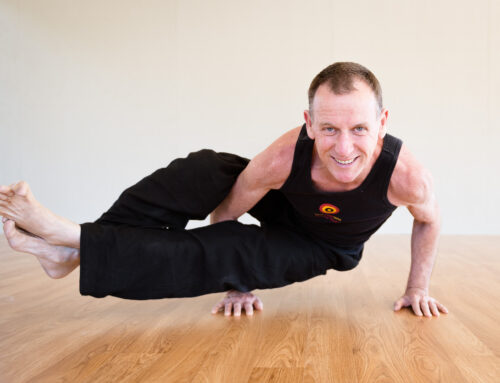Maria Kirsten teaches Applied Anatomy for Yoga Teachers and Physiology at Byron Yoga Centre, educating yoga teacher trainees about the importance of safety and support in the yoga studio. A yoga therapist, she lectures on yoga asana and anatomy around Australia and the world, and teaches yoga classes in Lennox Head. In this article, Maria talks about Applied Anatomy for Yoga and why this specialty training is so important for all yoga teachers.

Yoga therapy is defined by the International Association of Yoga Therapists (IAYT) as ‘the process of empowering individuals to progress toward improved health and well-being through the application of the philosophy and practice of yoga’. Maria further explains that yoga therapy is the application of yoga practices (not just asana) to alleviate suffering. “The premise of yoga is that we are born divine. Unlike the Western concept that the mind is a manifestation of the body, in yoga, the body is a manifestation of consciousness, and suffering is essentially caused by our forgetting how okay we are (avidya),” she says. “Each human being has the intelligence and inner resources to heal themselves, and a yoga therapist will provide practices and opportunities for them. For the purposes of our course, we are teaching teachers to be safer and to better support their students and clients.”
Why Applied Anatomy for Yoga Teachers is so important for yoga teachers
Quick to point out that nobody becomes a yoga therapist in 12 days, Maria says that yoga therapy training starts teachers thinking of yoga from the point of view of intention instead of performance. “Training to be a competent yoga therapist is a long process that is based on years of practice, teaching and study. Most people start their journey by trying to support their students in the classroom setting, preventing injury, supporting special needs, and cultivating the relaxation response in their students. Studying a therapeutic approach to yoga makes us better, safer teachers and practitioners, even if we never go on to be yoga therapists.”
She says that yoga therapy study is more than enhancing knowledge of anatomy and movement. “Students of our yoga therapy course have found they learned a tremendous amount about themselves and about their direction for future learning. They have gone on to teach classes much more confidently, to support their students more effectively and to feel they are much more safe and inclusive in their teaching delivery.”
Is Applied Anatomy for Yoga Teachers suitable for all styles of yoga?
A background in any style of yoga is a good basis for yoga therapy training, Maria advises. “We explore more Iyengar and Viniyoga in the course because they are traditionally therapeutic,” she says. “Practices that follow set sequences don’t apply to yoga therapy because it is all about individualising practice to the person not the person to the practice.”
About the Applied Anatomy for Yoga Teachers course at Byron Yoga Centre
The Applied Anatomy for Yoga Teachers at Byron Yoga Centre is run by Maria, flanked by highly experienced senior teachers, Eve Gryzbowski, Libbie Nelson, Judy Krupp and Jacinta McKewen. According to Maria, the course is designed to give students a taste of various approaches and styles so they can see that there is more than one way to approach yoga therapy.
“The structure of the course is less an intensive and more of a retreat. Therapy instruction is between 9am and 5pm each day, so there is time in the morning and evening to be led in practice, or go for a walk or practice alone. There is an emphasis on applied anatomy and therapeutic asana in the course, but pranayama, relaxation and mediation is also explored. Topics covered include common injuries, recovery after surgery, anxiety, trauma and depression, restorative yoga, and the therapy process.”
The course has a practical as well as theoretical focus, with students working with real clients, watching yoga therapy sessions being conducted and experiencing a one-on-one yoga therapy session (as a client) themselves.




